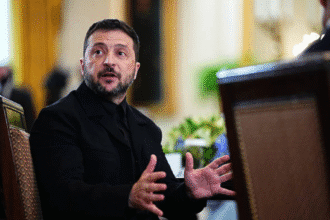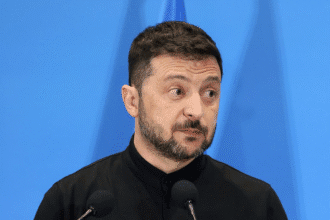Tens of thousands of people from all around came to celebrate the pontiff’s legacy during the Pope Francis burial, therefore marking an exceptional event in the annals of the Catholic Church. Leading the Catholic Church for more than ten years, Pope Francis, the first Latin American pope, possessed a leadership style distinguished by humility, compassion, and a strong will to social justice. The world is in grief over his unannounced death at the age of 88 after a stroke. But his funeral is a time for contemplation on his extraordinary impact and the long-lasting reforms he brought about in the Church and beyond, not only a last goodbye.
Attending the Pope Francis burial was for many a chance to show respect and thanks to the pontiff who changed the Church’s stance on the underprivileged and defenseless. He put out great effort to advocate for the underprivileged, advance peace, and solve social inequity and climate change. Along with a period of grief, the Francis burial is an opportunity to honor his remarkable legacy and the influence of his leadership on world affairs.
The Pope Francis Funeral: How did it go?
The Pope Francis burial started with his body on display in St. Peter’s Basilica, an open casket accessible for public gaze. Leading cardinals in red robes and priests in white, the procession moved his casket through the Vatican so that mourners could assemble in the Piazza and the basilica to pay their respects. Bells tolled, and the audience erupted into applause, a customary Italian indication of respect for someone of significance, infused the atmosphere with seriousness and reverence.
People from all around the world lined for hours to pay their respects, therefore, the public viewing started to draw ever more people. The line outside the basilica stretched for miles at one point, with thousands of people waiting patiently for a chance to stand before Pope Francis’ casket. The occasion served as a reminder of how profoundly millions of people have responded to Pope Francis’s message of love and serviMournersrans paid respect in diverse ways as the Pope Francis funeral procession passed the basilica. While some knelt and prayed, others crossed themselves and considered how he might have affected their life. With its great architecture and long legacy, the Church offered the ideal setting for such a moving event. Many stayed to appreciate the great beauty of St. Peter’s Basilica, a monument to the Church’s ageless majesty, and to understand the meaning of the occasion.
How was the Francis Fund received globally?
The Pope Francis burial is evidence of his worldwide impact. Traveling to Rome to engage in the grieving customs were people from every continent. Originally starting at eight hours long, the line to see the pope’s body increased over the day. Thousands of people, including dignitaries, religious leaders, and common people, were assembled to commemorate Pope Francis by the time the public viewing commenced. Not only did Catholics come to pay their respects, but his leadership and teachings also impacted people of all walks of life and religions.
Among mourners were UK Prime Minister Sir Keir Starmer, Prince William, and other political leaders from all around the globe. Still, the most moving accolades came from people who had directly felt Pope Francis’s dedication to social justice touched them. For instance, the Mexican couple Luis and Macarena, on their honeymoon, said they had visited the Vatican to see this momentous event. “We hoped to see Pope Francis, who blesses newlyweds,” Luis added. ” Seeing him at his last resting place will help connect to him now. Being a saint, Pope Francis will bless us from above.”
Likewise, American Mary E, residing in I, said she had paid her respects on a nocturnal train. “I love Papa Francesco,” she remarked. Despite the challenges in the Vatican, he battled authority to remain loyal to Christian beliefs, genuinely cared for immigrants, and was modest and friendly. One question that resonated with many was, “How Did Pope Francis Offer Comfort to the Grieving Father?“ — a reflection of his deep empathy and spiritual presence. Like Mary Ellen, many of the attendees intended to pray and beg Pope Francis for assistance with their concerns, especially those related to underprivileged groups.
What distinguished the Pope Francis funeral from previous ones?
Pope Francis’s particular inclination for simplicity set his burial apart from those of other popes. Pope Francis slyly expressed his desire for a more subdued burial than many of his forebears had. His requests were respected, and the celebration was kept smaller and more private to symbolize his style of leadership throughout his pontificate. Reflecting the modest life he led as both a priest and a pontiff, Pope Francis wanted his funeral to be simple.
His choice to be buried in a church honoring the Virgin Mary in central Rome instead of within St. Peter’s Basilica itself marked yet another important distinction. This action also underlined his wish to stay close to the people he served instead of the enormous authority connected with the Vatican and to avoid needless grandeur. The modest burial place of Pope Francis will be solely commemorated with a monument bearing his name.
The Pope Francis burial broke with the conventional, extravagant rites that had been standard in the Vatican. Throughout his life, Pope Francis often supported the qualities of simplicity and service; his last intentions for his funeral reflected these ideals.
Following his funeral, how will Pope Francis be remembered?
It was obvious as the Pope Francis funeral drew to finish that his legacy will shape the Catholic Church for next decades. The Church and the larger world have been permanently changed by his dedication to reform, support of the underprivileged, and fervent work on global concerns including immigration and climate change.
Emphasizing compassion, service, and humility, Pope Francis was a person who personally represented the Catholic religion. He dared to question the Church’s established systems and acted aggressively to solve long-neglected problems. The foundations of his papacy were his support of social justice, his openness to interact with persons from all walks of life, and his sympathy for the underprivileged.
The Church will get ready for the selection of a new pope in the next days as the Vatican enters the Sede Vacante (empty seat) term. Pope Francis’s legacy will be a lighthouse for the next generation of Church leaders even if the next head of the Catholic Church may have new difficulties. The devoted followers all around will always be inspired by his commitment to service, demand of justice, and love for all people.
Apart from a time to grieve his death, Pope Francis’ burial offers an opportunity to consider the influence of his life. Reminding us all of the value of humility, compassion, and helping those in need, his lessons will continue to direct Catholics and non-Catholics equally.








